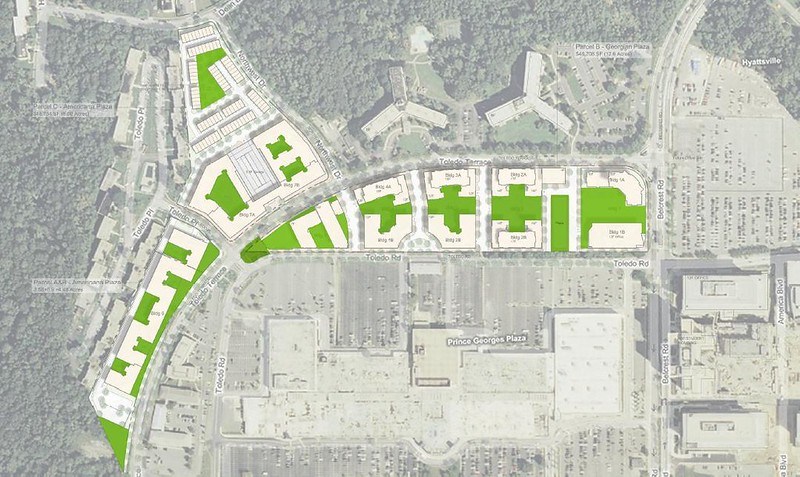Imagine a digital map that allowed you to see the footprints of every human being that has ever walked on our planet. If these footprints were red, and you were able to zoom in to see all the footprints across Brussels, Paris or Mexico City, you would see nothing but a large red blotch of overlapping footprints.
Like our current land-use maps, this imaginary map would allow you to move back in time. You could be looking at the area around the Roman Colosseum in medieval times, for instance, and then go back to ancient Rome and farther back until you reached Neolithic times, or as far back in time as modern archeology has taken us in that particular site.
The footprints left behind by generations of Romans would fade away at each step, and the red blotch of the medieval and ancient city would start to look more like a tightly-wound spider web, until you went so far back in time that there would be nothing left but a single trail of footprints across a wilderness.
I think the most surprising thing about this map would be the enormity of the human footprint across every forest, grassland, wetland, tundra and desert on Earth.
We would be surprised to find dense networks of footprints in what are now protected forests and jungles filled with wildlife. We could pan eastwards and zoom into a place called Steneto, in the Balkan Range of Bulgaria, one of the few remaining primary forests in Europe. Even here we’d find the footprints of medieval men and women.
Or we could pan westwards, all the way to Costa Rica and zoom into a place called Área de Conservación Guanacaste, a restored tropical rainforest that would be the perfect backdrop for a ‘medicine man’ film. Dig beneath the decomposing foliage and remove the Guanacaste trees, however, and you would find human footprints all over the place. Same goes for the entire Amazon rainforest, a place where human beings have lived for thousands of years.
Daniel H. Janzen, the tropical field biologist and evolutionary ecologist who spearheaded the effort to restore Guanacaste, argues that places such as these would be better off if we saw them in a different light. It’s not helpful, he says, to talk about “national parks”, “wildlife refuges”, “protected areas” and all those other places with their “obfuscating labels”. Instead, he argues, we should call them what they really are: “wildland gardens”.
A wilderness, Janzen argues, is not something human beings are comfortable with, an assertion that is borne out by the standard dictionary definition of the word. This translates into uneven and inadequate levels of statutory protection for these areas.
“Stop labeling the wild as the wild,” he writes. “There are simply many varieties of gardens. There is no footprint-free world. Every block of the world's wildlands is already severely impacted.”
We read about places like Serengeti National Park in Tanzania or Gorongosa National Park in Mozambique. These are wild and beautiful places, to be sure, but they need a large staff behind the scenes to keep running. Armed rangers, zoologists, botanists, veterinarians, tour operators, videographers, coffee growers, etc. Gorongosa National Park wouldn’t exist if it weren’t for the foresight and ambition of a conservationist from Idaho. It would be a Wild West of poachers, bandits and anti-government rebels, much like Texas in the early 19th century.
Janzen’s idea of a wildland garden is a policy prescription for the 21st century, one that is pertinent to our urban and suburban environments.
We can’t build wildland gardens anywhere near our cities, but at least we can aspire to create wildlife gardens that can provide some refuge to all those animals that have figured out how to dwell alongside or near human beings (birds, small mammals, fresh-water fish, invertebrates, etc.). And we can build these refuges out of crop field margins, road verges, lots held as investments, abandoned agricultural lands and so-called waste grounds or brownfields.
We can also include school playgrounds, tree islands, and, last but not least, the vast amount of land around private homes: The wildlife-poor lawns of suburbia that emit more CO2 than they capture when homeowners use electric or petrol-powered tools to maintain them.
Policy makers should see these tracts of land for what they are: Human gardens, big and small, that can provide ecosystem services and goods, including wildlife diversity, carbon sequestration, additional space for food provisioning, water filtration services, cooling effects to counter heat waves, and a range of recreational services.
We should give the same level of care to these oftentimes “trashed remnants” of our natural habitats that we do to wildland gardens like Gorongosa or Guanacaste. If this sounds preposterous, consider how many tracts of waste ground there are in Brussels, all those slivers of land beside shopping centers, airports, office parks, outlets, etc., and then compute their total area. Add these tracts of land to the ones in Antwerp, Paris, Warsaw and Mexico City.
You just cobbled together a sizeable pollinators’ republic out of the boring stuff of waste grounds or investment lots. A pollinators’ republic that does not need to be cobbled together to provide some of the goods and services listed above.
Or consider the lawns of Suburbia, or Gardenistan. No one knows how much land worldwide these suburban lawns take up, and this might explain why we've given the keys to the kingdom to the individual homeowner. With the right statues and municipal codes in place (or the right fiscal incentives and public awareness campaigns), these gardens would provide numerous ecosystem services and harbor wildlife again, in the thousands or tens of thousands of species if you include the wilds of the soil.
Examples of such statues or municipal codes abound. If you live in the municipality of Wezembeek Oppem near Brussels, for instance, and you cut down a tree in your backyard, there is a binding requirement to replant at least double the number of trees. So if you cut five trees to build a deck, you better have space for ten.
Initiatives such as these can make a real difference if more communities and regions move boldly in this direction, until the zeitgeist shifts for good. If we consider the total land area of the lawns of Suburbia and all the other bits and pieces of land that are seldom noticed, this cannot be dismissed as a fatuous proposal for ‘garden improvement’. This is a question of land use (or land misuse on an enormous scale), which is fundamentally a question for policy makers and the voters who elect them. And the choice is clear: We shouldn't waste this scarcest of resources while our croplands keep expanding worldwide at the expense of wildland habitats.
Our land-use maps paint a bleak picture of habitat fragmentation and deforestation, so maybe the time has come for city and regional authorities to begin the work of restoration with the bits and pieces we have left amidst our massive built-up areas with their ever-growing “lawnscapes”.
Janzen has given us a tried-and-tested blueprint for wildland gardens like Guanacaste. It is up to us now to widen the boundaries of this powerful idea and build our own mosaic of thriving wildlife gardens in our cities and suburbs.


